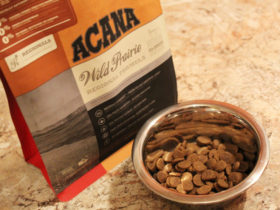Supports his home in our time every third layman.
Advantages
The insulation of the facade of the building helps to reduce its heat loss by tens of heating times.
First of all, of course, the costs of paying for housing and communal services are reduced, since the insulation of the facade allows you to reduce the power of the heating devices used in the heating of a particular building or structure.
In addition, the noise insulation of the building increases, and this is a great way out of the situation for the owners of apartments with thin walls suffering from constant noise coming from the outside.
Thanks to the insulation of the facade, you can get not only a warm house in winter, but also, this house will be much better to maintain coolness in the summer.
Do not forget that in addition to thermal insulation, the layman also receives the waterproofing of the building.
And finally, it is worth mentioning the fact that after the work on thermal insulation of the building or structure, the appearance of this building will change only for the better.
Usually begin the process of insulation of the facade with the preparation of the surface. To do this, it is necessary to eliminate all the irregularities, to close all the existing cracks with the help of building mixtures or mounting foam (for large diameter cracks). Sometimes, for the installation of insulation plates with a wide section, the starting profile is installed on the walls, but this is not mandatory and this will not affect the heat -insulating qualities.
The process of insulation
In order to surely save the walls from diaper rash and fungus, before installing the plates, the walls are treated with a special primer mixture.
After that, they start, directly to the installation. The adhesive mixture is applied to the heater slabs and the slabs are fastened to the wall. The adhesive mixture must be distributed around the entire perimeter of the plate in order to avoid the formation of air corridors inside the layer. Because the formation of such internal air compartments almost to zero reduces the thermal insulation properties of the insulation.
Then, for reliable fixation of the slabs, a reinforcing solution is applied, which also has water -repellent properties. After that, a mesh of fiberglass is attached and fixed with a reinforcing solution.
After the reinforcing solution dries, the primer is applied, thereby preparing the surface for applying facade plaster.
Insulation
There are several types of materials used as insulation for facades of buildings and structures.
Extruded polystyrene foam can be called an analogue of the well -known foam. But this material differs in that it has a higher density than foam, since it is manufactured using a special technology that meets state standards by extrusion (extruding). Output extruded polystyrene foam in the form of plates.
Polyurethane foam is a relatively new material used to warm buildings. Release it in the form of foam. When warming the facades, polyurethane foam must be strictly observed for the application of this material, as well as have special means of protection. Therefore, it is better to entrust such work to professionals. If you use polyurethane foam as a heater, you can not worry about the appearance between layers of air compartments, because this material perfectly fills all the cracks and voids due to its liquid consistency.
Mineral wool is produced in rolls. This material has excellent thermal insulation properties and is very easy to install. Mineral wool is also called ecological material. But its main drawback is the absence of all kinds of waterproofing properties.
Basalt cotton wool is produced both in slabs and rolls. Installation of basalt wool is a rather time -consuming process. This material has excellent thermal insulation qualities, as well as fireproof. But it is worth noting that basalt wool contains chemicals harmful to human health, that is, it is not an environmentally friendly material.
Buildings that are insulated by thermal panels are called thermomers, or thermos. It may take no more than two weeks for independent installation of thermal panels, since work on plastering the surface of the heat -insulating material to give the building aesthetic type is not required.
When selecting the material for insulation of the facade, it is necessary to pay special attention to the individual characteristics of the building.













Оставить коммент.